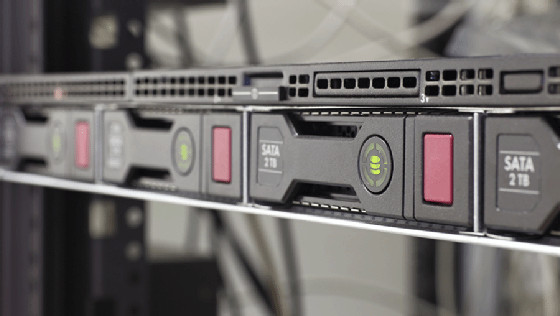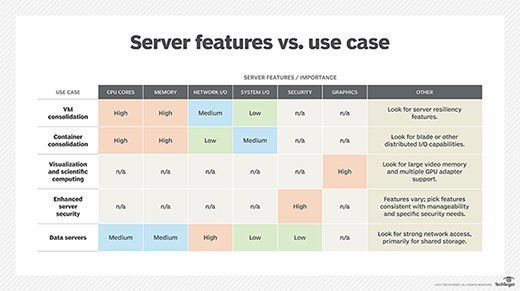In the digital age, the term “server” is thrown around frequently, especially in discussions about websites, online gaming, and business networks. But what exactly is a server PC? Simply put, a server PC is a computer or program that provides services to other computers or programs, known as clients. This interaction operates under the client-server model, where the server fulfills requests initiated by clients.
To understand this better, let’s delve deeper into the world of server PCs, exploring their functionality, types, and key differences from regular desktop computers.
Understanding How Server PCs Operate
The term “server” can be quite versatile, referring to physical machines, virtual machines (VMs), or even software designed to perform server tasks. The way servers function depends largely on the context and the specific service they are intended to provide. Server operating systems (OS), such as Windows Server or Linux distributions, play a crucial role in managing client requests within a network and ensuring smooth connections to requested resources. Servers are often configured to handle specific services, whether it’s managing access to printers, storing files, or hosting applications.
Physical vs. Virtual Servers
A physical server is essentially a dedicated computer built and utilized solely for running server software. We will explore the distinctions between server and desktop hardware in more detail later.
 Rack server inside a data center.
Rack server inside a data center.
A virtual server, on the other hand, is a software-defined representation of a physical server. Just like its physical counterpart, a virtual server has its own operating system and applications, completely isolated from other virtual servers operating on the same physical hardware.
The creation of virtual servers involves deploying a lightweight software layer called a hypervisor on a physical server. The hypervisor’s primary function is to enable the physical server to act as a virtualization host. This host then allocates the physical server’s resources—CPU processing power, memory, storage, and network bandwidth—among multiple virtual machines.
Administrators use a management console to allocate resources to each virtual server. This virtualization approach significantly reduces hardware expenses because a single physical server can efficiently run numerous virtual servers, eliminating the need for a dedicated physical server for each individual workload.
Server Software Essentials
At its core, a server requires two fundamental software components: an operating system and a server application. The OS acts as the foundational platform for the server application to operate. It manages access to network connections and the underlying hardware resources like storage devices, and provides essential dependency services for the application to function correctly.
The OS facilitates the server application’s ability to process client requests. For instance, the server’s Internet Protocol (IP) address and fully qualified domain name are configured at the OS level, enabling network communication and identification.
Cloud Servers vs. In-House Servers
When considering server deployment, businesses often face a choice between cloud servers and in-house servers. Cloud servers, like most cloud services, offer scalability and flexibility. They eliminate the need for physical space and server racks, often proving to be a cost-effective solution, particularly for small to medium-sized businesses. However, adopting cloud servers means relinquishing a degree of control over the server infrastructure to the cloud provider.
Conversely, in-house servers grant organizations complete control over their servers and associated resources. However, this control comes with the responsibility of managing physical space, maintaining cooling systems (HVAC), and ensuring robust physical security to prevent unauthorized access. In-house solutions are typically favored for enterprise-level applications requiring stringent control and where numerous servers are deployed within dedicated data centers.
A hybrid approach, combining both on-site and cloud server resources, presents a balanced alternative, allowing organizations to leverage the benefits of both models.
Server PCs vs. Desktop Computers: Key Differences
While both server PCs and desktop computers are built upon similar core technologies, significant differences exist, primarily driven by their intended roles. Most servers utilize x86/x64 CPUs and can execute the same code as desktop computers. However, unlike typical desktops, physical servers often feature multiple CPU sockets and employ error-correcting memory for enhanced reliability. Servers are also designed to support significantly larger amounts of memory compared to most desktops.
Due to the mission-critical workloads they handle, server hardware is engineered with redundancy in mind. Servers commonly include redundant power supplies and network interfaces. These redundant components ensure continuous operation even if a primary component fails, minimizing downtime.
Server hardware also diverges in form factor. Modern desktops are often compact mini-towers or laptops, designed for personal use. In contrast, most servers are rack-mounted, designed to fit into standard server racks. Rack servers come in 1U, 2U, or 4U sizes, indicating the vertical rack space they occupy.
Another critical distinction lies in the operating system. While desktop OSs like Windows 10 and Windows 11 may offer some server-like functionalities, they are not designed or licensed to replace a dedicated server OS.
While some desktop Windows editions include Hyper-V, Microsoft’s virtualization platform, it’s primarily intended for development purposes. Windows Server editions, on the other hand, include Hyper-V versions optimized for running production virtual servers and offer features like VM replication and advanced storage capabilities crucial for business continuity and resilience.
Types of Server PCs: Tailoring to Specific Needs
Servers are categorized based on their specific functions and applications. Here are several common types of servers:
- Web Server: Delivers requested webpages and files using HTTP, with web browsers acting as clients.
- Application Server: Hosts the business logic for applications in a distributed network.
- Domain Name System (DNS) Server: Translates domain names into IP addresses, essential for internet navigation.
- Proxy Server: Acts as an intermediary between clients and other servers, enhancing security and performance.
- Game Server: Supports multiplayer online games and related applications.
- Mail Server: Manages incoming and outgoing emails.
- Virtual Server: A software-defined server running on a shared physical server, providing users with dedicated server-like control.
- Blade Server: A compact server housing multiple modular circuit boards (server blades) within a single chassis, often dedicated to specific applications.
- File Server: Centralizes storage and management of data files for network-wide access and sharing.
- Policy Server: Provides authorization services and manages file tracking and control in policy-based networks.
- Database Server: Hosts and manages databases, responding to data queries from client applications.
- Print Server: Manages network-connected printers and print job queues.
 Table showing server features needed for different use cases.
Table showing server features needed for different use cases.
Essential Server Components: Hardware and Software
Server PCs are composed of various hardware and software components working in concert.
Hardware Components
At the hardware level, servers typically include:
- Rack Mount Chassis: The enclosure housing server components.
- Power Supply: Provides power to the server.
- System Board (Motherboard): The main circuit board connecting all components.
- CPUs (Processors): One or more central processing units for computation.
- Memory (RAM): High-capacity, error-correcting memory for data processing.
- Storage: Hard drives or SSDs for data storage.
- Front Control Panel: For basic server controls and status indicators.
- Rear Connectors: Ports for network, power, and peripheral connections.
- Network Interface: For network connectivity.
Most server hardware also supports out-of-band management through a dedicated network port. This allows for low-level server management and monitoring independent of the OS, enabling remote tasks like powering on/off, OS installation, and health monitoring.
Operating System Software
A server OS, such as Windows Server or Linux, provides the platform for server applications to run. It manages hardware resources, network connectivity, and provides essential services for applications.
Applications are the software that defines a server’s function. For example, a database server runs database application software, and a web server runs web server software.
Choosing the Right Server PC: Key Considerations
Selecting the appropriate server PC involves careful evaluation of various factors, including virtualization and containerization needs. When choosing a server, prioritize features based on your specific use cases. Small businesses, for example, may have unique server requirements.
Security features are paramount. Consider protection, detection, and recovery capabilities like data encryption (for data in transit and at rest) and persistent event logging for comprehensive security auditing.
If the server will rely on internal storage, the type and capacity of disks are crucial, significantly impacting I/O performance and resilience.
Many organizations are embracing virtualization to consolidate workloads onto fewer physical servers and are also leveraging cloud computing to reduce on-premises server footprint.
Consolidating more capability into fewer servers reduces capital expenditure, data center space, and energy consumption. However, it also increases risk, as more workloads become vulnerable to server failures. Server OSs like Windows Server include features to enhance data protection, disaster recovery, and overall resilience.
To streamline the server selection process, consider these tips:
- Secure management support and funding for server modifications and upgrades.
- Define workload requirements, including application types and data volumes.
- Establish a detailed budget encompassing hardware, software, infrastructure (power, cooling), maintenance, support, and security.
- Determine production environment needs, including user count, workload demands, and networking and OS environments.
- Select an OS based on current and future workloads, system administration needs, and staff expertise.
- For physical servers, choose the appropriate form factor and location, considering space, efficiency, and security.
- Develop a virtual server model to compare options or assess physical server capabilities.
By understanding what a server PC is, its various types, components, and key considerations for selection, you can make informed decisions to meet your specific computing needs, whether for personal projects, business operations, or large-scale enterprise infrastructure.
